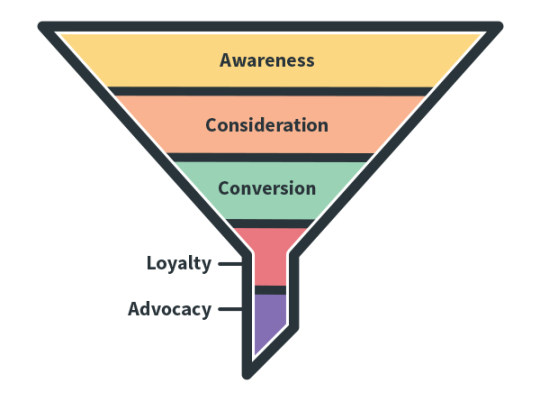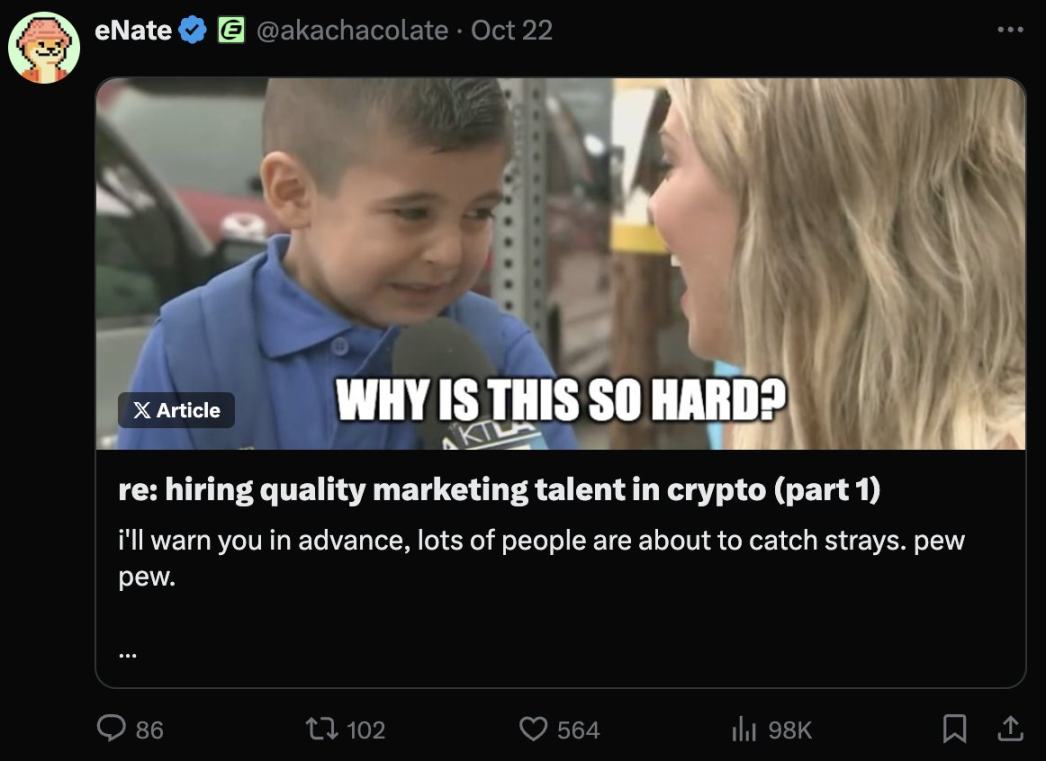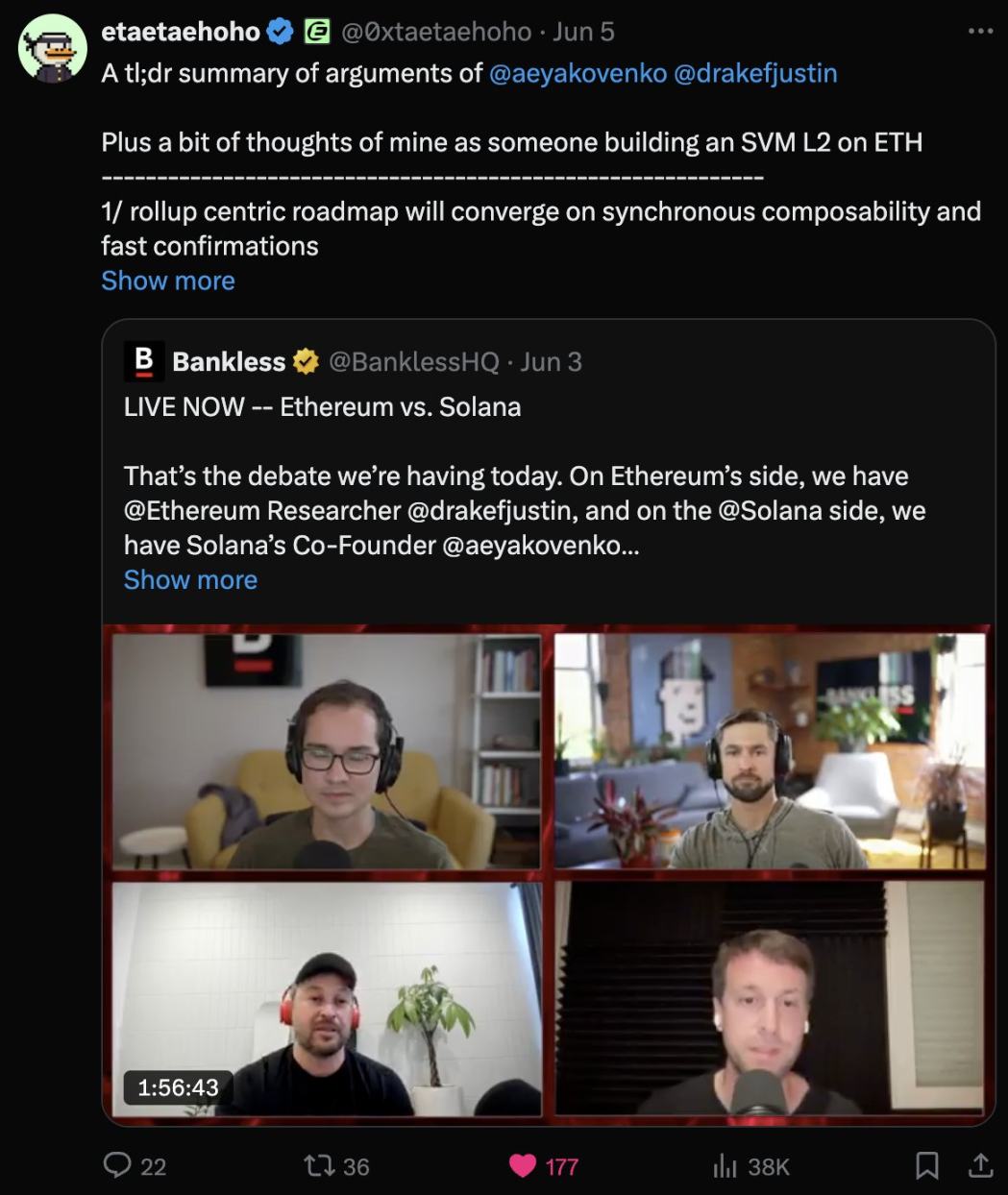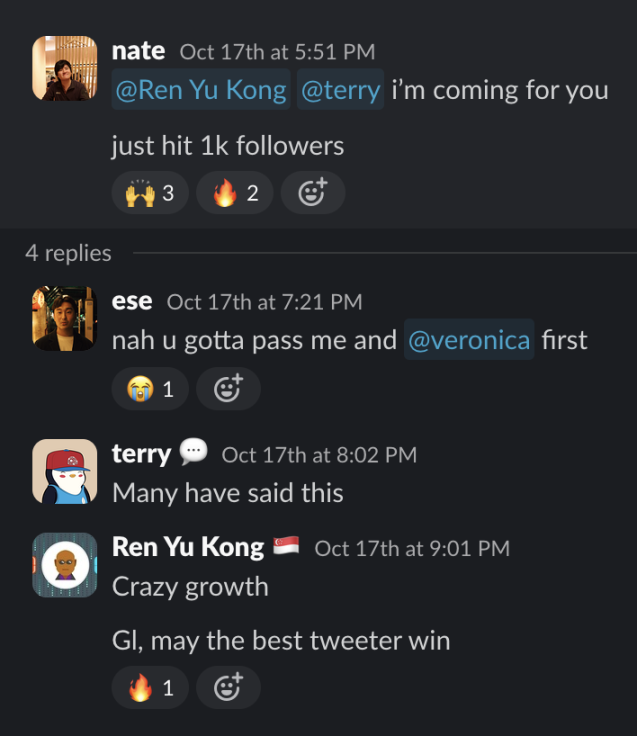How to Win on the Crypto Twitter (CT) Battlefield?
Written by: eNate, Growth Director at Eclipse
Translated by: Luffy, Foresight News
To be honest: I hate Twitter. I really hate Twitter, and I wish I had never used it.
Life is too short. As we age, we increasingly see how fragile life is (disease, accidents, war, etc.). Our time on this earth is limited, and I would rather be with positive people, as being with them is a joy. I don’t want to spend time with negative people, and Twitter is filled with toxic and carcinogenic energy. But I still spend time on this damn platform every day because if I’m not on Crypto Twitter (hereafter abbreviated as "CT"), I can’t do my job well.
A month ago, I indirectly wrote about this topic (How to Filter Quality Marketing Talent), and mastering CT has become a prerequisite for success in the crypto space.
However, there are some exceptions:
- Some businesses almost monopolize specific markets (e.g., Dexscreener). They quietly rake in huge profits, and frankly, they don’t need to be very active on CT because their competitors are weak.
- If your clients are entirely institutional clients (i.e., market makers or liquidity providers), then gaining attention on CT is less important. The key decision-makers you interact with will make decisions based on how much profit they can achieve while executing strategies, and this decision-making process won’t happen on Twitter.
But if you don’t fall into these categories (most people don’t), you need to stay active on CT. Unlike a few years ago, the crypto industry today is filled with competition in almost every vertical. There are not just dozens of CEXs, DEXs, wallets, cross-chain bridges, and blockchains, but new ones are emerging every day. In the past, launching the best technology could lead to victory, but now there is no consensus on what constitutes "the best technology." For example, launching L2 three years ago was considered novel, and now I’ve lost count of how many L2s there are.
It’s important to adapt to the times and evolve continuously. We are in an attention-driven economy, and the future super users are only half our age. Simply providing technology won’t drive usage because the competitive landscape has fundamentally changed. "Build it, and they will come" is a failed and naive strategy.
Ninety percent of these companies will die within five years. Even if they perfectly execute their product roadmaps (that "if" is not easy to achieve), many companies will run out of funds before they find product-market fit / profitability. Or, they will fail because their competitors attract all the users. Other companies will take on all the risks and invest heavily because market conditions have improved, and then when the next bear market inevitably hits and funds run dry, they will be abandoned by the market.
The goal of marketing and growth work is to strategically distribute and promote the technology that engineers are developing to attract attention and subsequently gain adoption. If done well, this plays a crucial role in extending the company’s lifespan. Solidifying your brand positioning and building brand image is just one aspect of this work. If you can’t execute on marketing channels, all of this is meaningless.

People need to know you exist (awareness), and only then can you expect them to use your product (conversion; if they like the product experience enough, they may eventually promote your product (advocacy).
When it comes to the user acquisition process, the funnel model is essentially the bible. The top of the funnel is referred to as "brand awareness," commonly known in the crypto industry as "mind share." Effectively leveraging different distribution channels is how you win mind share for your company. This, in turn, increases the chances of converting those who become aware of your brand/product into users. The more ways you reach your audience, the greater your chances of acquiring more users.
But here, we need to ask two fundamentally different questions:
- How do I get more people to know about my product/brand?
- How do I convert those who know about my product into users?
In the early stages of a product, companies can focus on the top of the funnel. They don’t yet have a functional product that can be used, so they can concentrate their marketing spending and efforts on building strong mind share. But as you get closer to and eventually launch the product, this situation changes. The pre-product and post-product phases are entirely different games, and many crypto startups struggle to formulate go-to-market strategies in the post-product phase because they are trying to solve two different problems simultaneously.
A quote I often reference is:
"If a tree falls in a forest and no one is around to hear it, does it make a sound?"
In other words, if people don’t know about your product, how can they use it? Conversion happens after awareness, and the team needs to face the reality that without first investing effort to ensure people know about your product, usage rates cannot be achieved. You can invest in both the top and bottom of the funnel simultaneously, but if you haven’t achieved the top’s KPIs, then the bottom’s KPIs cannot be realized.
This is because at each step of the marketing funnel, the percentage of people moving to the next step decreases. What does this mean? Let’s break it down:
- First, you need to win awareness.
- A smaller portion of those people will consider using your product.
- The proportion of those who ultimately use it is even smaller.
- Frustratingly, only a small portion can retain long-term.
This is why CT is so important. Crypto industry insiders often specifically mention "mind share" in the context of CT, and there’s a reason for that. CT is the most important distribution channel in crypto because it is the channel most likely to convert the audience into users. But as I talk more with founders trying to elevate their marketing game and offer advice, I realize that many do not understand why CT is such an important distribution channel. This article will explain the reasons for CT's importance and the successful strategies I think about.
Why is CT So Important?
Before I started working in cryptocurrency, I served as a client marketing consultant across various industries. These clients included cosmetics giants like L'Oréal and Revlon, social media companies like Instagram and LinkedIn, sports leagues like the NFL and NBA, and more. These companies invest millions of dollars annually in advertising/collaboration and rigorously evaluate the effectiveness of different distribution channels (i.e., digital advertising, billboard and other physical ad placements, social media marketing, etc.) to continuously optimize their marketing strategy mix. If a channel performs well, clients will look for ways to improve it to increase ROI; if it doesn’t work, they will quickly cut spending and allocate funds elsewhere.
One important lesson I learned at this stage of my career is that not all distribution channels are created equal. The specific distribution channels that are most effective for your business vary based on your key audience/user demographics. With this in mind, you can imagine my surprise when I first joined a cryptocurrency company (dYdX) and realized that very few crypto companies were trying to use different distribution channels to improve user acquisition. Years later, I’m disappointed to say that most crypto companies still operate this way. Perhaps because most of these companies are early-stage startups with limited funding, but at some point, you need to have multiple distribution channels to scale your audience.
Notably, when I first joined dYdX, Twitter was one of the few channels they invested resources in to attract followers. To be honest, it took me about a year to understand why Twitter is such an important distribution channel for crypto. In fact, before joining dYdX, I intentionally avoided using Twitter and had long refused to create a personal account. But when you think about it seriously, it becomes clear why Twitter is the primary medium for crypto companies to interact with potential users.
The average user’s journey into the crypto space is fraught with friction and pain points. Generally, to use any DApp, you first need to create a wallet. After completing this process and storing your private keys, you need to convert fiat currency into stablecoins or assets like ETH. Then, you need to connect your wallet to a specific DApp and learn how to use it. To be honest, this is a simplified description of a highly complex user journey.
After using crypto products for a while, you forget the complexities of joining as a new user. Compared to simply going to a store to buy something or registering for a social media account, you have to go through more steps before using these products. This has significant implications for overall marketing strategy.
For resource-constrained crypto startups, trying to handhold newcomers through every process of entering the crypto space is extremely inefficient. In the short term, you need to focus your marketing efforts on channels with a high concentration of existing crypto users to see positive ROI. While there are some nuances (for example, many people use Kakao in Korea, and many use WeChat in China), for Western markets (the US/Canada and Europe), CT is by far the channel with the highest user density. In many cases, I can clearly see:
- The trading alpha circulating on CT far exceeds that of any other public channel (e.g., Reddit or YouTube). Many excellent traders I know make decisions by monitoring new product launches and Twitter information. Interestingly, almost every 10x return I encountered in memecoin trading was discovered on Twitter, or one of my friends found it on Twitter and then shared it with another group.
- Airdrop hunters on Twitter share fairly accurate predictions about which protocols should be farmed weeks or even months before incentive programs begin.
- The most popular NFT collections often start generating buzz on Twitter before whitelists open or public minting occurs.
- Venture capitalists request to see Twitter profiles as part of their due diligence process when evaluating new startups.
In short, if you are not active on CT, you will miss out on an audience that will definitely pay attention to new product launches. While you figure out which other channels are suitable for your specific product, you need to win on Twitter because it is essentially the only channel you know the audience will pay attention to, and you have a considerable chance of converting them into actual users.
Moreover, the importance of CT is not only reflected in user acquisition but also in user retention. When a place has such a high density of daily active users, they inevitably talk about a lot. CT is where you can most accurately gauge audience sentiment and receive honest, unfiltered feedback about what’s wrong with your protocol. Without CT, your company will struggle to successfully fend off FUD (fear, uncertainty, and doubt).
There are many aspects of FUD that need interpretation. I could write a novel on this topic, so I will follow up with another article in the future. Here are the key points outlined:
- CT will help you understand the severity of the fire drill situation so you can respond accordingly. Is this a survival crisis, or will it pass quickly? Why are people actually angry or uneasy? How widespread is the impact?
- Compared to any other medium, CT will provide you with more background information to help you make critical growth decisions. When you are active on Twitter, you will learn to distinguish between genuine communities and profit-driven impostors. You will gain a reference framework to understand why past decisions or even industry history can influence your perception of a brand/product.
Yes, I admit that finding genuinely beneficial and high-quality information requires filtering out a lot of noise. But the information mentioned above is crucial for guiding the company through various stages of growth (pre-funding, post-funding, pre-product, post-product, etc.). When senior leadership/marketing teams lack a solid strategy for Twitter, it is a major warning sign that they will not succeed.
If you cannot concentrate some resources on the distribution channels with the highest success rates, it will be difficult for you to gain significant usage. Your understanding of how to retain your users will also be very limited.
So I’m sure your follow-up question is, "How do I succeed on Crypto Twitter?"
The Path to Winning on CT
In simple terms, the winning strategy on CT consists of three key elements:
- Authenticity
- Consistency
- Understanding audience scope
Let’s start with authenticity. I have seen people on CT trying various strategies to gain attention:
- Founders who are as quiet as a mouse in real life but post crazy comments on Twitter to attract user engagement.
- Women posting provocative or foot photos to gain more views and likes.
- Leadership engaging in LARP (live-action role-playing) as tech experts to score points with thought leaders, but lacking the expertise in engineering trade-offs.
It’s important to note that I am not criticizing anyone. Don’t hate the player; hate the game! If these strategies can win more attention, then it might be a successful strategy, right? That said, I want to warn you that if these online personas are not authentic, the strategy is likely to be hard to sustain.
People will eventually discover that the identity you present online is a false one, and when you make too many mistakes, the facade will crumble. Moreover, one person cannot be an expert on every topic. I have several examples from Eclipse that illustrate how authenticity has helped us gain more attention on Twitter:
Before eVijay became CEO, many suggested he act crazier and more flamboyant on Twitter. This was completely inconsistent with his style. If you’ve met eVijay or watched his podcast, you quickly realize that "crazy" is almost an antonym for him. His composure, elegance, and seasoned experience are significant reasons why many respect him as a leader. People follow him not to see a continuous stream of trending topics.
Most of the Eclipse team is active on Twitter, but you will notice that our content varies because we have deep knowledge of different topics:
My expertise is in go-to-market strategy and growth hacking. I don’t post about technical topics because that wouldn’t be authentic. For example, I know nothing about zk-SNARKs, so I won’t talk about them on Twitter. But I write these long articles about marketing, and people find them valuable.

This is not my first time emphasizing the importance of CT.
etaetaehoho previously worked at 1kx and published a lot of research. Therefore, he has unique insights on certain topics. He wrote articles about how venture funds evaluate portfolio companies when investing. He also posts articles on Twitter about technical topics and advanced strategies because he has a deep understanding of these subjects. That’s why people respect his intellect and engage with him.

eSe is one of the best traders I know. This guy has brought me several 50x returns (though I often lose them due to foolishness). He posts trading strategies and trends he observes in the market. People follow him because he is a profitable trader, not a KOL peddling his positions.

This all-hands-on-deck approach works well for us because it allows us to attract different audience segments. Our Twitter content benefits from our thought-sharing because it resonates with different people for various reasons. Crypto marketers and founders may appreciate my content because I share insights on marketing strategies, but traders may not care as much about what I write. In contrast, traders might read eSe’s tweets.
The second key element of a robust strategy is consistency. Whether through company accounts or personal accounts, regularly posting content is essential. If you don’t have a large following yet, posting occasionally and then disappearing for long periods will prevent your account from growing. Don’t sacrifice quality for quantity, but posting as much as possible about topics you genuinely want to discuss will significantly increase your engagement. Start with the company account, continuously experiment until you find the right rhythm and content type combination.
To encourage everyone at Eclipse to post more consistently, we started holding regular meetings to help people brainstorm tweet topics and enhance their social influence. Ultimately, your colleagues will master the knack and can handle it themselves, but guide them when they are just starting this process! Not everyone is a natural social media expert.
At first, focus on staying active on CT and showcasing yourself. Regularly interact with other builders and community members. Identify general trends in the industry and common pain points for users. As long as you are regularly on CT, you will gain a more comprehensive understanding of your business. You can also strategically contextualize your business decisions by looking at the mistakes others have made before.
Don’t believe it? Give it a try. I guarantee that if you spend an hour on CT every day for 30 consecutive days, you will learn more about the crypto industry and related current events than anywhere else, and you will increase your company’s visibility while learning. It’s a win-win outcome.
As a leader, you can also turn it into a fun game! Whenever I surpass my younger teammates on Slack, I tease them. Social media is a young person’s game. If I’m older than you, your follower count should be much higher than mine 🥱

Finally, you must learn to narrow your audience scope. You will never connect with everyone on Crypto Twitter. There are many different ways to segment the Crypto Twitter audience (e.g., maximalists vs. agnostics, DeFi vs. consumer, etc.). Trying to find a way to resonate with everyone on CT is a waste of time. Identify the people who matter most to your company and prioritize them.
Prioritization is key because having a small group of loyal followers who consistently engage with your content is more impactful than having a large number of followers who don’t care about what you post. Your core audience should be the group that has the most significant impact on your business, not those on CT who will never care about your product.
For example, if you are a B2B company, which companies or developers do you need to attract? Is your strategy aimed at winning the audience's attention? If you are a gaming company, does institutional funding really matter to you? Tailor your content based on the audience most relevant to your core KPIs; you don’t need to win everyone’s attention.
There is a strong causal relationship between trying to win everyone’s attention and failing to gain any attention. When you try to be relevant to everyone, you become irrelevant to anyone because there is no differentiation. Start with a targeted and clear approach, and then expand from there once you achieve success. As your business grows, you will organically gain more relevance, and then you can broaden your audience scope.
This is a marathon, not a sprint. Over time, you will naturally begin to deliver more significant contributions to new areas of CT.
Finally, I want to reiterate what many successful people on CT have said. Don’t overthink it, and don’t be afraid to make mistakes.
The attention span and memory on CT are extremely short. If you don’t post enough, it’s likely that no one will notice you. Even if they do notice, and you mess up, they will forget within weeks. Pick yourself up, get back on the stage. Don’t be shy about trying new things.
Moreover, some companies that launch cutting-edge, technologically advanced products have very low mind share due to ineffective utilization of CT. The opposite of this statement is also true. Many people in the crypto industry will tell you that some of the most well-known companies on Twitter have countless issues behind the scenes because their technology simply doesn’t work.
免责声明:本文章仅代表作者个人观点,不代表本平台的立场和观点。本文章仅供信息分享,不构成对任何人的任何投资建议。用户与作者之间的任何争议,与本平台无关。如网页中刊载的文章或图片涉及侵权,请提供相关的权利证明和身份证明发送邮件到support@aicoin.com,本平台相关工作人员将会进行核查。




